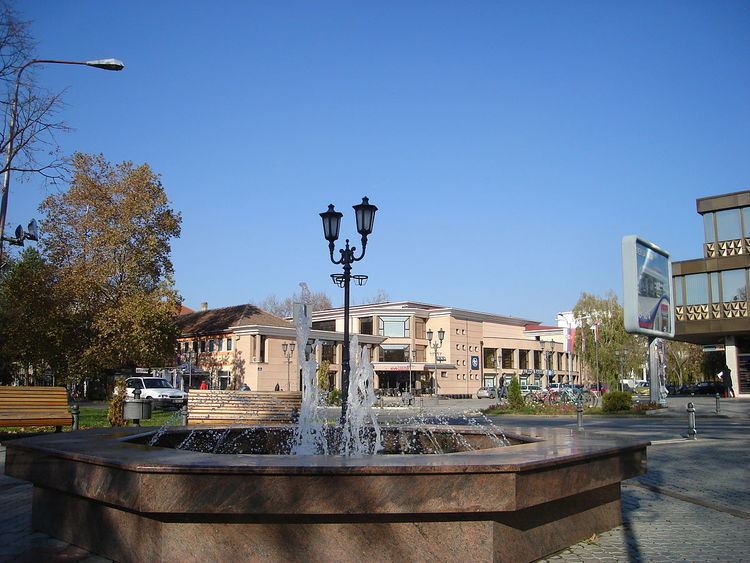Settlements 7 Postal code 21460 Area 107 km² | District South Bačka Time zone CET (UTC+1) Area code +381 21 Local time Wednesday 8:41 AM | |
 | ||
Weather 10°C, Wind NE at 10 km/h, 87% Humidity | ||
Vrbas hunters vs beograd blue dragons
Vrbas (Serbian Cyrillic: Врбас, Hungarian: Verbász) is a town and municipality located in the South Bačka District of the autonomous province of Vojvodina, Serbia. In 2011 the city had a total population of 24,112, while the municipality had 42,092.
Contents
- Vrbas hunters vs beograd blue dragons
- Map of Vrbas Serbia
- Name
- History
- Inhabited places
- Ethnic groups in the Vrbas municipality
- Settlements by ethnic majority
- Ethnic groups in the Vrbas town
- Languages in the Vrbas municipality
- Historical population of the town
- Politics
- Notable citizens
- References
Map of Vrbas, Serbia
Name
Its name stems from the word "Willow" in the Serbian language. During the SFRY period, the town was renamed Titov Vrbas (meaning "the Vrbas of Tito"), after Josip Broz Tito. Like all other towns in Socialist Yugoslavia named after Tito, the first part was dropped once the new states were formed during the early 1990s.
In Rusyn, the town is known as Вербас, in Hungarian as Verbász, in Croatian as Vrbas, in German as Werbass, and in Turkish as Verbas.
History
Vrbas was mentioned first in 1213 during the administration of the Kingdom of Hungary. According to other sources, it was mentioned first in 1387. In the 16th century it became a part of the Ottoman Empire. During Ottoman administration it was populated by ethnic Serbs.
Since the Treaty of Passarowitz (1718), Vrbas and the Banat were placed under administration of the Habsburg Monarchy. According to the 1720 census, it was populated exclusively by Serbs (about 250 families).
After 1784 many Germans settled in the town founding a new settlement named Novi Vrbas (Neu-Verbasz) near the old Serb settlement, which then became known as Stari Vrbas (Old Vrbas).
In 1910, population of Novi Vrbas was mostly composed of ethnic Germans, while population of Stari Vrbas was ethnically mixed and was mainly composed of Serbs and Germans.
In 1918, Vrbas became part of the Kingdom of Serbs, Croats and Slovenes, which was later renamed to Yugoslavia. The town was under Axis occupation in 1941-1944, and during that time it was attached to Horthy's Hungary. As a consequence of the World War II events in Yugoslavia, the German population fled from the town after this war. In the same time, many settlers from Montenegro came to Vrbas and other neighboring places.
Inhabited places
Vrbas municipality includes the city of Vrbas and the following villages:
Ethnic groups in the Vrbas municipality
According to the 2011 census the municipality of Vrbas had a total population of 42,092, including:
Settlements by ethnic majority
Settlements with Serb ethnic majority are: Bačko Dobro Polje, Zmajevo, Kosančić, Ravno Selo and Vrbas. Ethnically mixed settlements are: Kucura (with relative Rusyn majority) and Savino Selo (with relative Montenegrin majority).
Ethnic groups in the Vrbas town
Languages in the Vrbas municipality
According to the 2002 census, 85% of inhabitants of the Vrbas municipality speak Serbian as mother tongue. Other spoken languages include Rusyn (8%), Hungarian (4%) and Ukrainian (1%).
Historical population of the town
Politics
Seats in the municipal parliament won in the 2004 local elections: [1]
